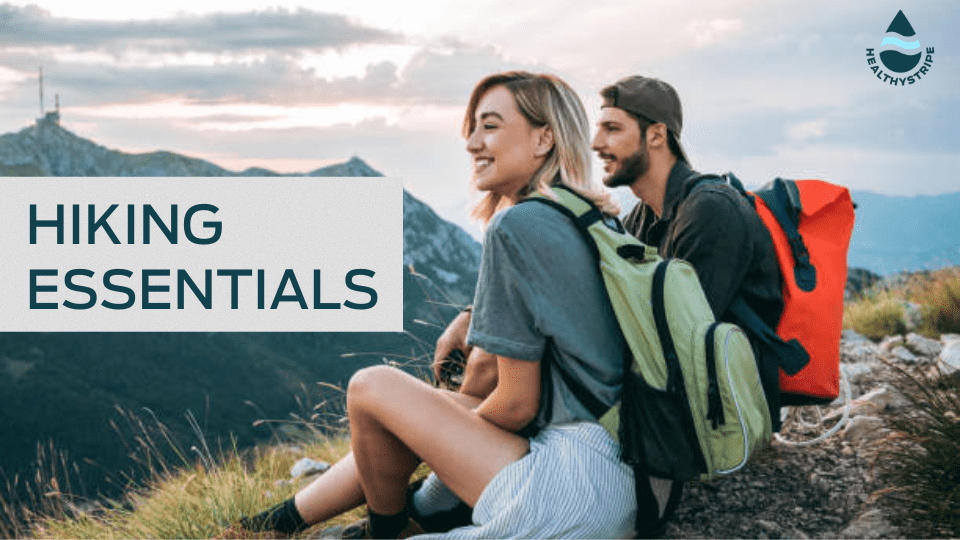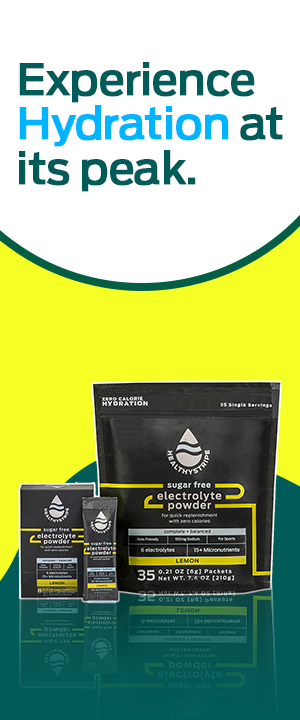Hiking Essentials: Top Tips and Hiking Essentials checklists

Embarking on a hiking adventure is a delightful and rejuvenating way to connect with nature alongside your loved ones. It offers a unique opportunity to explore the untouched beauty of natural landscapes, far away from the constraints of roads and urban life. Leave your worries about time, work, and everyday stress behind, pack your day hiking backpack essentials, and immerse yourself in the wonders of the great outdoors.
You might feel apprehensive or uncertain if you’ve never experienced hiking before. Concerns about your physical fitness or getting lost along the way may arise. However, rest assured that hiking caters to individuals of all abilities and preferences. According to reports, hiking helps improve brain function, mood, and overall mental health (1). It is a gentle and enjoyable exercise that allows you to savor the company of your companions and embrace the awe-inspiring beauty surrounding you.
Aside from sheer enjoyment, hiking also provides numerous health benefits. It aids in weight management and stress reduction while reducing the risks of heart disease, hypertension, and diabetes. According to reports, hikers burn around 400 calories every hour (2). By choosing to engage in hiking, you are prioritizing your overall well-being. And that is why hiking is a popular activity all over the world.
This comprehensive guide will provide all the hiking essentials you need to embark on your journey. It covers everything from packing the necessary gear to preparing for a day hike. Following these tips and planning can ensure a safe, comfortable, and pleasurable hiking experience.
What Are The 10 Essentials for Hiking?
When packing for a short hike, it’s important to remember that you’ll be carrying everything with you, so it’s best to pack light. However, there are a few essential items that you’ll need to ensure a successful and enjoyable hiking experience. Here’s a detailed hiking essentials list to guide you in your packing:
1. Navigation Tools:
Bring a detailed map of the hiking area to understand the trail and surrounding landmarks. Carry a compass or GPS device to navigate your way, and always determine your location accurately. Mark the locations of campsites, emergency exits, water sources, and rest areas on your map for reference.
2. Adequate Water:
Water is crucial for optimal performance during your hike, so drink plenty of water before you start and continue to sip throughout the day. Carry an adequate amount of water based on the length and intensity of your hike. It is one of the most important hiking backpack essentials.
3. Adequate Food:
Pack extra snacks to energize you and your hiking companions throughout the day. Consider lightweight and nutritious options such as energy bars, trail mix, and dried fruits. Plan and pack a light lunch or meal if your hike extends into lunchtime. Choose non-perishable items that are easy to prepare and consume on the trail.
4. Clothing and Rain Protection:
Dress in layers to easily adapt to changing weather conditions. Choose moisture-wicking and breathable materials for comfort. Carry a lightweight poncho or rain jacket to protect yourself from unexpected showers or sudden weather changes. Pack extra socks to keep your feet dry and comfortable throughout the hike.
5. Safety Items:
Safety is paramount when it comes to hiking. Day hikers comprise the largest group, accounting for 42% of national park search and rescue cases, four times greater than the next largest group (3). Include a fire starter, such as waterproof matches or a lighter, to help you start a fire for warmth or signal in an emergency. Carry a compact and reliable flashlight to navigate in low-light conditions or during night-time hikes. Keep a whistle handy to attract attention and signal for help if needed.
6. First-Aid Kit:
Prepare a first-aid kit tailored to your needs. Include hiking and camping essentials such as blister treatment, bandages, tape, antibiotic ointment, gauze pads, and any necessary medications for you and your hiking companions. Carry a list of emergency contact numbers and relevant medical information, such as allergies or existing conditions.
7. Multi-Purpose Tool or Knife:
A knife or multi-purpose tool can prove invaluable on the trail. Use it for various tasks like cutting fabric for bandages, opening packages, or even starting a fire if needed.
8. Sun Protection:
Protect your skin from harmful UV rays by applying a broad-spectrum sunscreen with an SPF of 15 or higher. Reapply every two hours, especially if you’re sweating. Wear sunglasses that provide 99 to 100 percent UVA and UVB protection to shield your eyes from the sun’s glare and potential damage. Aim to hike in shaded areas during the sun’s peak hours (10 a.m. to 4 p.m.) and choose mornings for open-area hikes.
9. Backpack:
Select a backpack that feels comfortable and adequately distributes the weight, avoiding excess strain on your back and shoulders. Always wear both shoulder straps to distribute the weight and prevent discomfort or strain evenly. Adjust the backpack to rest close to your body and on your back for better balance and stability. Opt for a backpack with a padded and adjustable hip belt to alleviate strain on your shoulders and back, providing extra support.
10. Trash Bag:
Pack a trash bag to help keep the trails clean and preserve their natural beauty. Use a zippered plastic bag to securely store wrappers and other trash until you can properly dispose of them. Encourage younger hikers to do the same.
By following this detailed hiking gear best list, you’ll be well-prepared and equipped for a safe and enjoyable short hike, ensuring you have everything you need without carrying unnecessary weight. Remember to consider the specific requirements of your hike and adjust your packing accordingly.
Top 9 Tips For Hiking
Before you lace up those boots and hit the trails, let us equip you with the knowledge and confidence to make your hiking journey a roaring success. We’ve curated the nine ultimate tips and day hiking essentials for beginners, ensuring you’re ready to conquer any mountain, overcome any obstacle, and make memories that will last a lifetime!
- Start with a Stroll: Hiking is like a blossoming experience—you must take it slowly and steadily. Begin with shorter, less challenging trails to build your endurance and get acquainted with the rhythm of hiking.
- Gear Up: The right equipment can make or break your hiking experience. Invest in sturdy, comfortable footwear and a well-fitted backpack. Don’t forget essentials like a map, compass, first aid kit, and plenty of water.
- Plan, Plan, Plan: Prepare like a pro by researching your chosen trail. Familiarize yourself with the terrain, difficulty level, and weather conditions. Check if any permits or reservations are required. By planning, you’ll maximize safety and ensure a smoother journey.
- Snacks & Sips: Hiking is no walk in the park—it’s a workout! Keep your energy levels up with nutritious, lightweight snacks like trail mix, energy bars, and fresh fruits. Hydration is vital, so pack ample water or a water filtration system to quench your thirst.
- Safety First: Nature is beautiful and unpredictable, so it’s crucial to prioritize safety. According to studies, women account for 55% of non-fatal hiking fall accidents, while men represent 45% (4). Stick to marked trails, heed any warning signs, and be mindful of wildlife. Carry a whistle for emergencies and let someone know about your hiking plans. By respecting the hiker’s code, you’ll enjoy a worry-free experience.
- Get Some Layers: The weather can be as unpredictable as your favorite Netflix series, so it’s essential to dress in layers. Lightweight, moisture-wicking clothing will keep you comfortable as temperatures fluctuate. Don’t forget to pack a waterproof jacket if the skies open up!
- Take a Hiking Companion: Hiking solo can be a daunting experience for beginners, but bringing along a friend adds extra excitement. Sharing the joy, the sweat, and the breathtaking views with a hiking buddy will create memories that bond you for life.
- Leave No Trace: As hiking enthusiasts, we must preserve the pristine beauty of the trails we traverse. Follow the Leave No Trace principles: respect wildlife, dispose of waste properly, and leave nature as you find it.
- Embrace the Journey: Above all, remember that hiking is about embracing the journey rather than reaching the summit. Take the time to savor the panoramic views, listen to the rustling leaves, and breathe in the fresh mountain air.
Best Electrolytes For Hiking
Finding the best electrolytes for hiking involves considering various factors such as your individual needs, preferences, and the specific demands of hiking. Here are some steps to help you find the right electrolytes for your hiking adventures.
Firstly, it’s important to understand electrolytes. These minerals, including sodium, potassium, calcium, and magnesium, help maintain fluid balance, nerve function, and muscle contractions. Assess your needs by considering temperature, duration, intensity, and personal sweat rate. You may need more electrolytes if you sweat heavily or hike in hot environments.
Research available options, both in local stores and online. Look for cub scout hiking essentials such as electrolyte products for active individuals or sports activities. Read product labels to understand electrolyte content and other ingredients. Consider taste, convenience, and personal preferences. Some electrolyte products come in tablet or powder form, making hiking more convenient.
Experiment with small quantities during shorter hikes to see how your body responds. Pay attention to how you feel during and after the hike to gauge effectiveness. Remember to drink sufficient water and consume a well-rounded diet with natural sources of electrolytes alongside electrolyte supplements.
The Importance Of Electrolytes: Dehydration Can Be Serious
Dehydration is a very common occurrence during hikes. Dehydration level higher than 2% of body mass can lower endurance performance (5). To prevent this, it’s important to replenish electrolytes, including salt, during exercise. Electrolyte supplements like Gatorade typically provide 1/2 cup per hour for adventure athletes covering longer distances. Muscles may not receive adequate nourishment without proper electrolyte intake, leading to increased effort and weakened performance.
Electrolytes play a crucial role in hydration and serve various vital bodily functions. Magnesium is necessary for proper muscle contraction, carb metabolism, and protein synthesis for healing. Potassium contributes to fluid balance and nerve impulses. Calcium supports muscle contraction, bone maintenance, and blood coagulation. Sodium is essential for nerve impulse transmission and muscle contractions. Chloride aids in acid-base balance, fluid regulation, and normal nerve impulse function. These electrolytes work together to ensure your body functions optimally.
Conclusion
So, there you have it, people. These are some hiking essentials, 10 things for hiking, along with some tips. Make sure that you pack correctly and carry all the essentials. Have a good hike.
Should I take electrolytes before or after a hike?
What is the difference between hiking and trekking?
Hiking and trekking are outdoor activities that involve walking in natural environments but differ in various aspects. Hiking usually refers to a leisurely walk on established trails, often completed within a day, and can range from easy to moderate difficulty levels. Trekking, on the other hand, typically involves longer, more arduous journeys, often spanning multiple days or weeks, often in remote and challenging terrains. Trekking usually requires carrying camping gear and navigating through rugged landscapes and may involve higher altitudes and more physically demanding conditions.
How can I increase my stamina for hiking?
Increasing stamina for hiking requires a combination of regular exercise and gradual progression. To improve your endurance, exercise in cardiovascular activities such as running, cycling, or swimming to enhance your overall fitness level. Additionally, incorporate regular hikes into your routine, gradually increasing the duration and difficulty of the trails you tackle. This progressive approach helps your body adapt and build stamina over time.
What are the essential needs of hiking?
The essential needs for hiking include a few key items that ensure your safety and comfort on the trails. Proper footwear, such as sturdy hiking boots or shoes, is crucial to provide traction, support, and protect your feet. Carrying sufficient water to stay hydrated during the hike is vital, along with snacks or meals to maintain energy levels. Other essentials include a map or navigation tools to stay oriented, sunscreen for sun protection, a first aid kit for emergencies, and appropriate clothing layers to adapt to changing weather conditions.
What gear should we have for hiking?
When it comes to essential hiking gear, it’s important to be prepared and equipped for the trail. Start with a suitable backpack to carry your essentials comfortably. Your clothing choices should consider the weather conditions and be made of breathable materials. Hiking boots or shoes should have good traction and ankle support. Other essential gears may include a headlamp or flashlight for low-light conditions, a compass or GPS device for navigation, a multi-tool for various purposes, and a whistle for emergency signaling.
What to avoid when hiking?
While hiking, there are certain things you should avoid to ensure a safe and enjoyable experience. Avoid straying from marked trails to minimize the risk of getting lost or damaging fragile ecosystems. Leaving trash behind harms the environment, so always pack out what you pack. Ignoring weather forecasts can lead to dangerous situations, so stay informed and be prepared for changing conditions. Lastly, it’s important not to overestimate your abilities or underestimate the difficulty of the terrain. Plan hikes that align with your fitness level and gradually challenge yourself as you gain experience.









